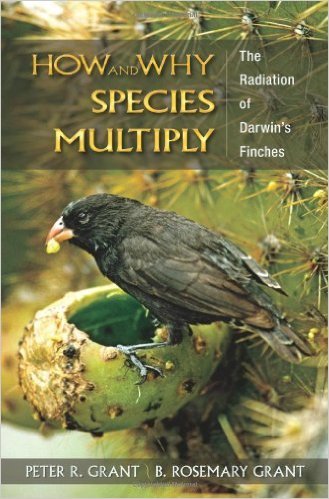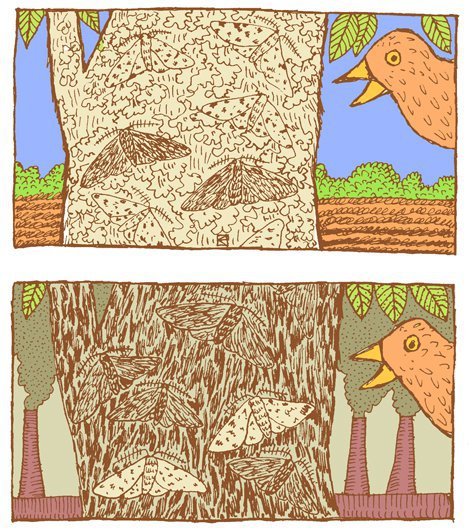ريتشارد دوكنز's Blog, page 502
April 26, 2016
Five Human Spaceflight Missions To Look Forward To In The Next Decade
Photo credit:
NASA’s Orion spacecraft will be able to take humans further away from Earth than ever before. NASA
From astronauts breaking records for the longest amount of time spent in space to experiments growing food and keeping bacteria in orbit, the past decade of human spaceflight has been fascinating.
Huge New Study Reveals The Impact Of Spanking On Children
Photo credit:
A parent spanking a child in Germany in the 1930s. German Federal Archive via Wikimedia Commons CC BY-SA 3.0 de
The appropriateness of spanking as a parental disciplinary technique arouses passionate debate. But a new meta-analysis of five decades of research suggests that, in addition to the psychological effects on children, there may be a large price to pay for the parents.
Measuring the effects of spanking has proven difficult, not only because so many people come to the topic with unmovable opinions, but because spanking is often accompanied by other forms of physical punishment, and many studies do not distinguish these sufficiently for conclusions to be drawn about spanking alone.
Why It’s Impossible To Actually Be A Vegetarian
Photo credit:
In a sense, aren’t they one and the same? 'Heads' via www.shutterstock.com
In case you’ve forgotten the section on the food web from high school biology, here’s a quick refresher.
Plants make up the base of every food chain of the food web (also called the food cycle). Plants use available sunlight to convert water from the soil and carbon dioxide from the air into glucose, which gives them the energy they need to live. Unlike plants, animals can’t synthesize their own food. They survive by eating plants or other animals.
What We Learned From Chernobyl About How Radiation Affects Our Bodies
Photo credit:
Liukov / Shutterstock.com
The world has never seen a nuclear accident as severe as the one that unfolded when a reactor exploded in Chernobyl on April 26 1986, sending vast amounts of radiation into the skies around Ukraine, Belarus and Russia.
The planet had experienced massive releases like this before, in the bombings of Hiroshima and Nagasaki in 1945. But Chernobyl-related radiation exposure had a more protracted character.
There Are Also Drawbacks To Being Bilingual
Photo credit:
shutterstock. noche
The ability to speak more than one language certainly has its perks. It enables you to work in another country, for example, interact with people while travelling, or consume foreign media.
Britain’s Ash Forests Face Extinction – But A Tree Named Betty Could Save Them
Photo credit:
Ash accounts for 20% of the UK’s trees. www.shutterstock.com/Phil MacD Photography
Ash dieback is back in the news, even though it never really went away. The first confirmed reports were from a few woodlands in East Anglia in late 2012, and urgent surveys soon established a much wider distribution in other parts of England as well as Scotland and Wales.
Need Help Teaching Natural Selection? Try This!
Natural selection is part of every state’s high school science standards, but that doesn’t mean we teachers are always successful in connecting our students with the topic. If your students are like mine, I’m sure you get some disconcerting responses when you ask them to explain how a feature of a species, like the dark color of peppered moths, could have evolved by natural selection. For example, one student wrote, “The moth most likely changed color due to the fact that its environment did as well. It needed to blend in with its surroundings so it became darker.” This student is demonstrating a few troubling misconceptions—most prominently that evolution happens to individual organisms in their lifetimes (not populations over generations), a common mistake made by many beginning students.
What can we do to help this student? Yes, it’s important to get students to focus on the individual level, where differences in color affect the survival and reproductive success of the moths, But it’s imperative that we don’t stop there. Students have to understand that changes resulting from these fitness differences accumulate over generations at the population level. For this, it helps for students to have some background in basic statistical concepts, something that is not always covered in introductory textbooks or materials. Fortunately, there is the HHMI BioInteractive web site.
The BioInteractive web site has a wealth of resources for teaching natural selection. Some of my favorites are available at Evolution in Action: Data Analysis, a set of activities dealing with the evolution of Darwin’s finches during a 1977 drought. One of the resources is an Excel spreadsheet packed with real data collected by the famous  One of the many books authored by the Grants.
One of the many books authored by the Grants.
biology duo, Peter and Rosemary Grant, on finch beak size, body weight, wing length, and lower leg length. Data are provided for 50 finches that died during the drought and 50 that survived. I have students construct bar graphs of the means for each trait with error bars representing 95% confidence intervals so they can see the change in the average size of the birds as a result of the drought. Constructing and interpreting error bars is an important skill they need for success on the AP Biology Exam. More importantly, I also have them construct separate histograms for beak depths of survivors and non-survivors. By calculating mean beak depths for each group of birds, they can see that the birds that died had a mean beak depth of 9.11 millimeters (mm) while the survivors had a mean beak depth of 9.67 mm—from this they can draw the same conclusion drawn by the Grants, that beak depth was the most important factor determining whether finches survived the drought or perished without leaving offspring. It’s powerful to be able to draw important conclusions like this from data, and has a much longer-lasting impact than if I were to just tell my students “it was beak depth” from the beginning.
Following the class discussion, we watch the short film The Beak of the Finch, in which the Grants take us through their research process and major findings. While watching the film, students learn that prior to the drought, there was a range of seeds varying in size and hardness available for the birds to eat, but during the drought there were only the large, hard seeds of cactus bushes. Finches with smaller beaks were unable to crack the large, hard cactus seeds. 80% of the birds died, mostly those with smaller than average beaks. The mean beak depth of the medium ground finch population increased following the drought as a result of differential survival and reproductive success. Importantly, students can see that individual finches did not change the size of their beaks. Change occurred in the distribution of beak depths at the population level as a result of the interactions that occurred between individual organisms and their environment. Selection acts on individuals, then the population evolves. All of this can clearly be tied directly to the data analysis the students did prior to the film, which helps to reinforce these conclusions.
 (Khaydock CC BY-SA 3.0)
(Khaydock CC BY-SA 3.0)
Following instruction, my students construct better explanations of evolutionary changes caused by natural selection. Here’s that same student’s response to the peppered moth prompt after instruction with HHMI’s BioInteractive resources: “When the Industrial Revolution began the more common color of the moth was probably lighter, but there were still some variations in the population that had darker coloring. When the moths’ environment became darker, the few darker colored moths were more likely to survive and reproduce, while the lighter moths probably died before producing offspring because they were not well hidden. Over time, the genes for darker color became more popular and there were less light colored moths.” Not bad, right?
This is just one example of how the HHMI BioInteractive resources have helped to improve my teaching and my students’ understanding. The HHMI BioInteractive web site is a rich source of well-designed, expertly reviewed, and teacher-tested instructional resources for teaching evolution. There is also a growing list of resources for teaching earth and environmental sciences. I encourage you to check it out.
Bob Cooper teaches biology at Pennsbury High School in Fairless Hills, Pennsylvania, and is a teacher ambassador for HHMI. He has been a supporter of NCSE for many years, and just recently became a member of NCSEteach.
Should We Worry About Arsenic In Baby Cereal And Drinking Water?
Photo credit:
What’s in that baby cereal? Baby via www.shutterstock.com.
Even though most people don’t know much about chemicals in general or poisons in particular, virtually everyone knows that arsenic is bad. In the first century, arsenic was already known to be a deadly poison . However, it was the Borgias in the 14th and 15th centuries who perfected its use to eliminate opponents in order to increase their wealth and power.
What Mongol History Predicts For The New Season Of Game of Thrones
Photo credit:
© 2015 HBO
As season six of HBO’s Game of Thrones looms, speculation is rife. Is Jon Snow really dead? What do the clips featuring a blind Arya mean? And what are the implications of the return of the Dothraki? This last question is the one that has got me thinking the most.
April 25, 2016
Watch A Parachute Drop Go Wrong As Three Cars Slam Into The Ground
Photo credit:
lmonasde/YouTube
Parachutes are bound by the laws of physics, as any school lesson will teach you. So, you would think it would be fine to put your trust in them. Well, as the U.S. Army learned, human error and outside circumstances can sometimes make the laws of physics a little less predictable.
ريتشارد دوكنز's Blog
- ريتشارد دوكنز's profile
- 106 followers



